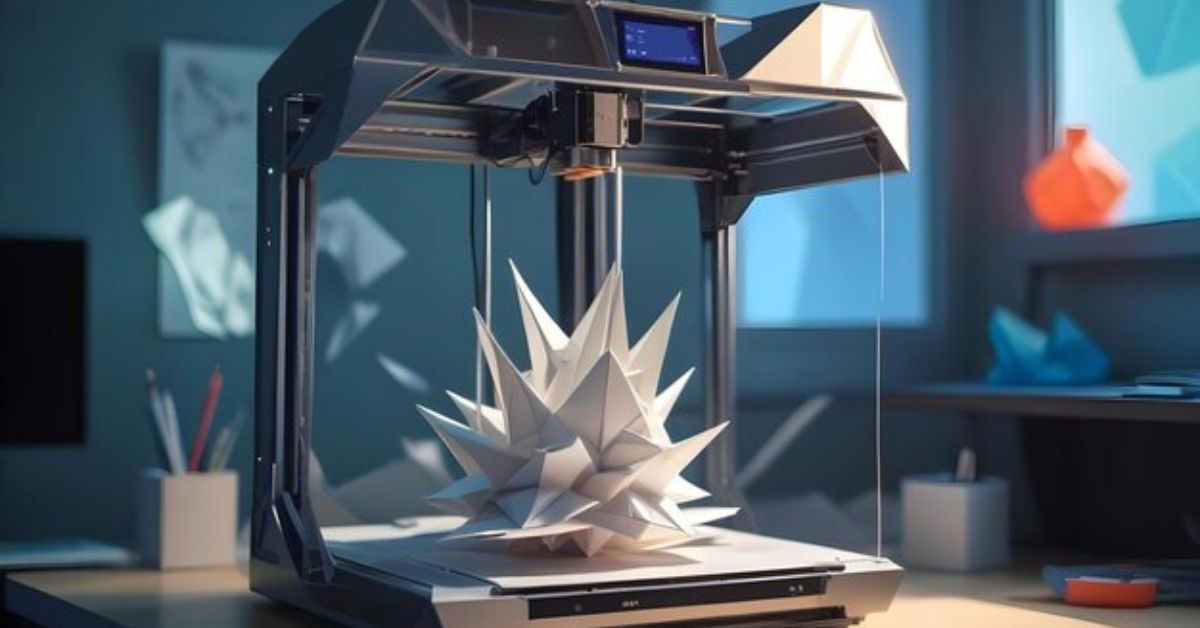3D printing is a fascinating and versatile technology that has become more accessible in recent years. While print quality and material strength are critical considerations, many enthusiasts are also eager to increase their print speed to save time without sacrificing precision. But how fast can you realistically print, and what factors affect print speed? In this article, we’ll explore the elements that influence the maximum speed you can achieve with your 3D printer, the potential trade-offs, and how you can fine-tune your 3D printer for optimal performance.
Understanding 3D Printing Speed
3D printing speed refers to how quickly the printer can lay down material to form layers of an object. This speed is measured in millimeters per second (mm/s) and varies based on several factors, including the printer’s mechanics, the type of material used, and the complexity of the object being printed.
Most entry-level and mid-range 3D printers operate at speeds between 40-60 mm/s for standard prints. However, certain printers can achieve speeds upwards of 100 mm/s or more, particularly with fine-tuning and modifications. While it’s tempting to increase the speed to reduce print times, going too fast can lead to a range of problems, including poor print quality, layer misalignment, and structural weaknesses.
Factors That Affect Maximum Print Speed
1. Printer Design and Mechanics
The design and build quality of your 3D printer are primary factors that determine how fast you can print. High-quality 3D printers with robust frames, precise motors, and advanced components tend to handle higher speeds better than cheaper models.
- Cartesian vs. CoreXY Designs: Cartesian-style printers, like the popular Ender 3, are more common but tend to struggle with high-speed prints due to their less rigid frame structure. CoreXY printers, on the other hand, offer a more rigid and stable design, which can allow for higher speeds without sacrificing print quality.
- Linear Rails and Belt Systems: Printers with linear rails instead of standard rods and high-tension belt systems tend to offer better stability at higher speeds, reducing the risk of vibration and misalignment. If your printer has loose or poorly maintained belts, you may notice a loss in precision at higher speeds.
2. Extruder and Hotend Capabilities
Your printer’s extruder and hotend system directly affect how fast you can print. The extruder pushes filament into the hotend, where it melts before being deposited onto the build plate. The speed at which this process happens depends on several components:
- Hotend Temperature: At higher speeds, the hotend must heat the filament quickly enough to maintain a consistent flow. If the hotend cannot heat the filament fast enough, under-extrusion may occur, leading to weak or incomplete prints. Upgrading to a high-flow hotend can help maintain extrusion quality at faster speeds.
- Filament Type: The material you use will also impact speed. For example, PLA is one of the easiest materials to print with at higher speeds, whereas ABS and PETG require more precise temperature control and may not handle high speeds as well without defects.
- Direct Drive vs. Bowden Extruders: A direct drive extruder has the motor mounted directly above the hotend, making it easier to control filament retraction and extrusion at higher speeds. Bowden extruders, which use a longer tube to feed filament into the hotend, may struggle with retraction at high speeds, especially with flexible filaments.
3. Print Settings and Layer Height
Print settings play a critical role in determining the maximum speed you can achieve while maintaining quality. The layer height, infill density, and wall thickness are all important factors that should be balanced for high-speed printing.
- Layer Height: Increasing the layer height can reduce print time, but it also affects the print’s resolution. For example, 0.2 mm layer height is a common setting, but reducing it to 0.1 mm will slow down the print dramatically due to the additional layers required. Larger layer heights (e.g., 0.3 mm) can be printed faster but may reduce the surface quality and detail of the model.
- Infill Density and Pattern: More intricate infill patterns (like cubic or grid) take longer to print, especially at higher densities. Reducing the infill percentage can save time, but at the cost of structural integrity. Simpler infill patterns, like lines or zigzag, can support higher-speed printing while maintaining strength.
- Wall Thickness: Thicker walls require more material and printing passes, which slows down the process. For faster printing, you may want to reduce wall thickness, but be aware that this could compromise the print’s durability.
4. Firmware and Software Settings
Your printer’s firmware and slicing software also affect how fast you can print. Many 3D printers allow you to modify their firmware settings, such as acceleration and jerk, to improve high-speed performance.
- Acceleration: Acceleration controls how quickly the printer reaches its maximum speed. Lower acceleration values mean the printer will take longer to reach high speeds, which can improve print quality but slow down the process. For high-speed printing, increasing the acceleration setting can help, but it may cause more stress on the motors and belts.
- Jerk: Jerk refers to how quickly the printer changes direction. A higher jerk value allows the printer to change direction more abruptly, which can speed up the print but may cause imperfections, especially on sharp corners or intricate details.
Using slicing software, such as Cura or PrusaSlicer, you can also adjust settings like print speed, acceleration, and infill patterns to optimize print times. Most slicers have presets for specific materials and print speeds, which can be a helpful starting point.
5. Printer Upgrades for Higher Speeds
If your goal is to achieve the highest possible print speed, you may need to upgrade certain components of your 3D printer.
- Upgraded Hotend: Installing a volcano-style hotend or high-flow hotend allows for faster filament extrusion, especially for larger layer heights. These hotends have larger nozzles and heating blocks, enabling the filament to melt and flow more quickly, ideal for high-speed prints.
- Stiffer Frame: Vibrations and instability are common problems when printing at high speeds. Upgrading the frame with aluminum extrusions or adding bracing can improve rigidity and reduce vibrations, allowing for smoother prints at faster speeds.
- Linear Rails: Replacing standard rods and bearings with linear rails provides more precise movement and reduces wobble, especially when printing at high speeds. Linear rails can handle more stress and ensure smoother movement across all axes.
- Dual Z-axis Motors: Some printers have a single motor driving both sides of the Z-axis, which can result in uneven layers at higher speeds. Upgrading to dual Z-axis motors improves stability and allows for more consistent layer heights during fast prints.
Pros and Cons of High-Speed Printing
Pros
- Reduced Print Times: The most obvious benefit of high-speed printing is that it saves time. Large or intricate models that would take hours at standard speeds can be completed much faster.
- Increased Productivity: For those who print multiple models or run small-scale production, faster print times mean more efficient workflow and higher output.
- Experimentation: Pushing your printer to higher speeds allows you to explore new settings and fine-tune your machine’s capabilities. This experimentation can help you understand the limits of your printer and how to balance speed and quality.
Cons
- Reduced Print Quality: Printing at higher speeds can lead to lower quality, with visible layer lines, rough surfaces, or less precise details. Balancing speed with quality is crucial, especially for parts that require high resolution.
- Increased Wear and Tear: High-speed printing puts more strain on your printer’s components, especially the motors, belts, and hotend. Over time, this can lead to more frequent maintenance and the need for replacement parts.
- Structural Weakness: Printing too fast may compromise the integrity of the object, especially if the infill is reduced or layer adhesion is poor. This is especially important if you’re printing functional parts that need to withstand stress.
Finding the Optimal Speed for Your Printer
While it’s tempting to push your printer to its limits, it’s important to find a balance between speed and quality. Testing different print speeds with various models, materials, and settings can help you find the sweet spot where you achieve both efficiency and precision.
Start with a basic speed of 50-60 mm/s, and gradually increase it while monitoring print quality. Keep an eye on signs of under-extrusion, layer misalignment, and surface roughness. If these issues become pronounced, dial back the speed until you reach a satisfactory compromise.
Conclusion
While there’s no definitive answer to how fast you can print, the maximum speed largely depends on your 3D printer design, components, and settings. With the right upgrades and careful fine-tuning, speeds of 100 mm/s or more are achievable, but always remember to consider the trade-offs in print quality and durability. By balancing print speed with quality, you can optimize your 3D printing experience and make the most of your machine’s capabilities.









